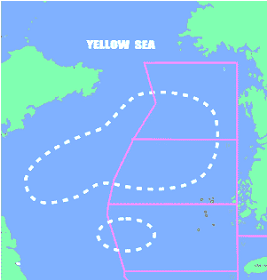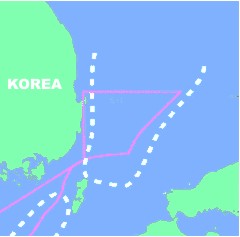|
|
| |
Sedimentary
Basins, Offshore Korea |
| |
|
| |
a.
Yellow Sea Basin |
| |
|
| |
| Yellow
sea basin has been relatively less explored compared
to other basins in offshore Korea. Exploration activities
carried out in the basin are only five exploratory
wells drilled in the northern depression and seismic
survey with 5 x 5 Kms or more sparse grid. Total
33,784 L-kms of seismic data have been acquired
in the South Yellow Sea Basin up to date. The thickness
of Cretaceous to Paleocene strata is estimated at
about 4000 m in the south-west sag and 1500 m in
the central sag. The Eocene sedimentary rocks, as
much as 3500 m in the south-west sag and 3000 m
in the central sag, are well preserved. The tremendous
thickness of the source and reservoir strata give
rise to the prospectivity of this basin. |
 |
|
| |
|
| |
|
| |
|
| |
b.
Ulleung Basin |
| |
|
| |
Recently,
gas discovery has been in the block VI-1 of Ulleung
basin.
Despite the exploratory drilling commenced in 1972,
most of gas discoveries have been reported since
late 80's, and the first commercial gas discovery
based on new play concept has been reported by the
well Gorae V in 1998. To date, a total of 15 wells
have been drilled in the block VI-1 since 1972 and
gas was discovered at nine of these. The high rate
of gas discovery and the success at the Gorae V
gas field give rise to expectation of high potential
prospects around the block VI-1. |

|
|
| |
|
| |
|
| |
|
| |
c.
Che-Ju Basin |
| |
|
| |
To
date 14 exploratory wells have been drilled in
Che-ju basin. Of these, five have recorded encouraging
indication of gas and/or oil shows. Total seismic
coverage (2D) is about 58,000 L-km.
Che-ju
basin is divided into 8 separate depressions.
Each of these is segmented by NE-SW trending prospective
structure highs.
All the depressions contain a predominantly clastic
sedimentary fill ranging in age from Paleogene
to Recent. The thickness of sediments in the NE
part of basin is estimated up to 7000 m. Two play
systems are expected in the Che-ju Basin; Paleogene
and Miocene play system. Various trap types exist
within the basin and two major trap types are
readily interpreted from 2D seismic data.
|
 |
|
| |
|
| |
|
| |
|
| |
|
| |
|
| |
|
|


